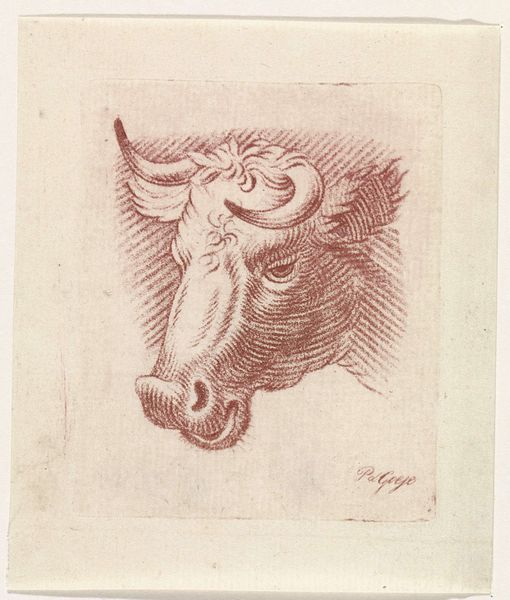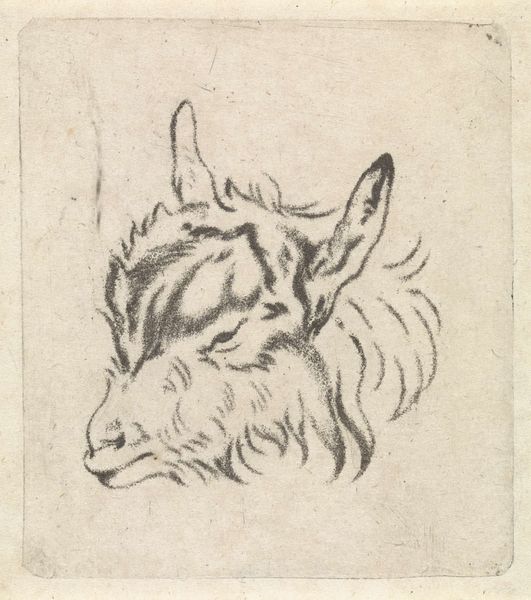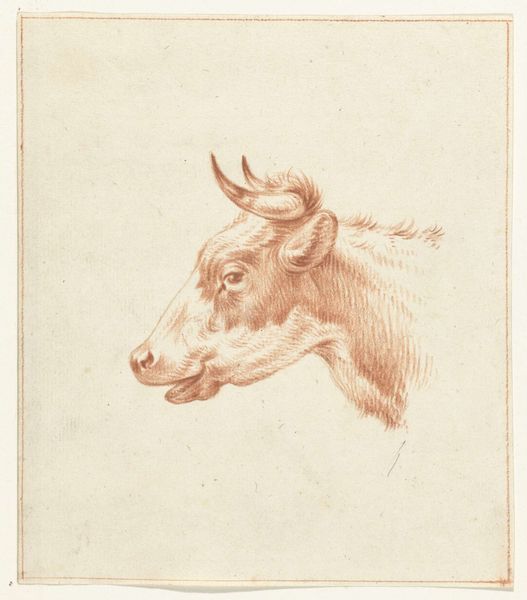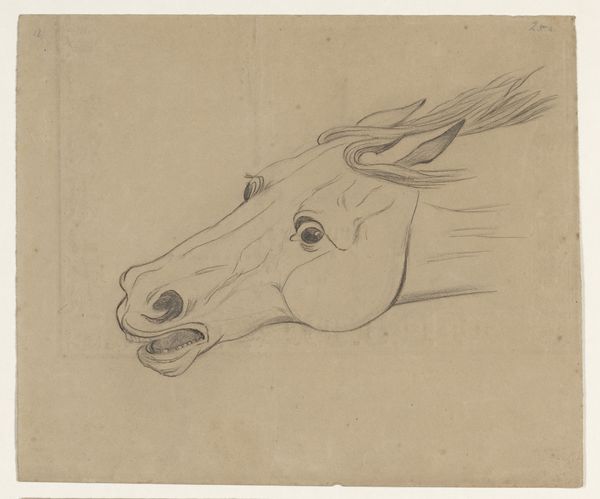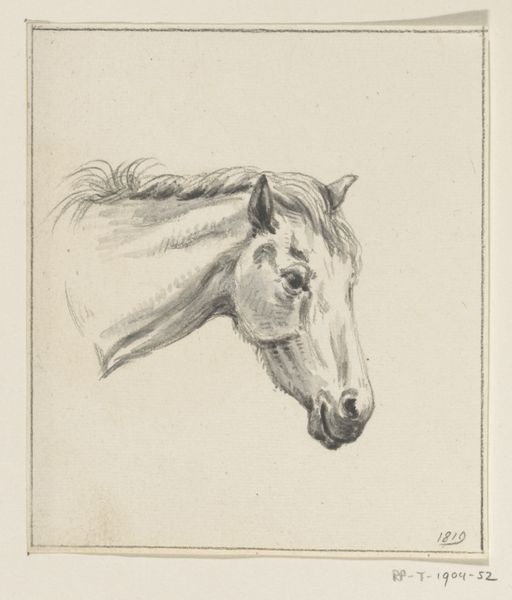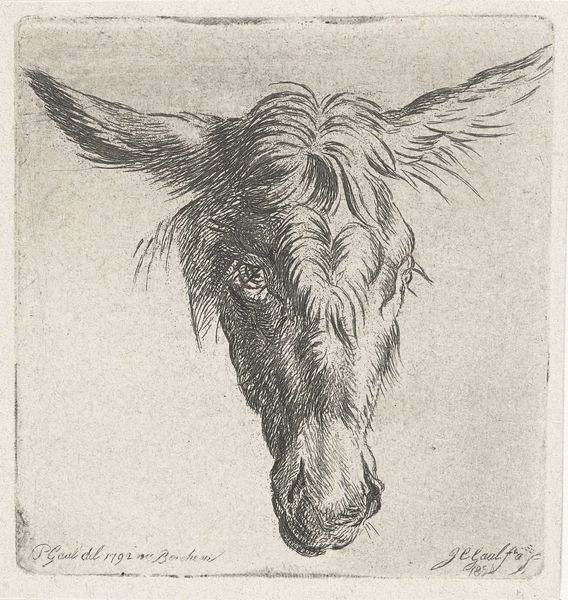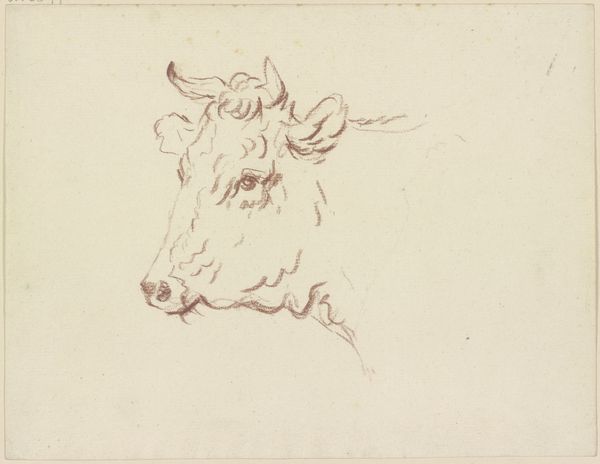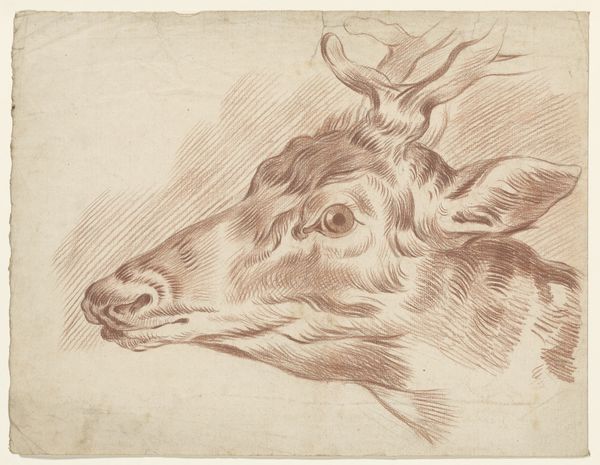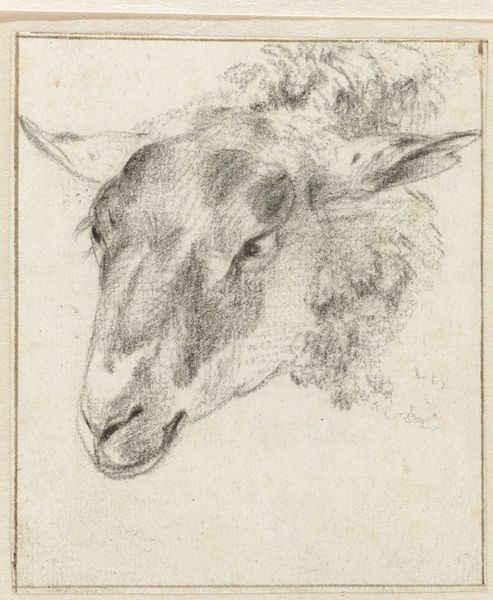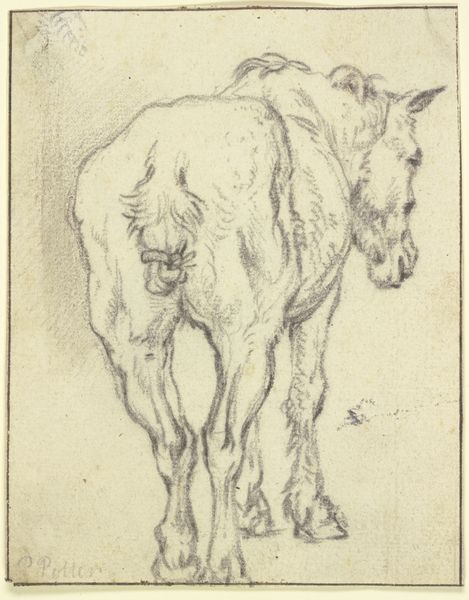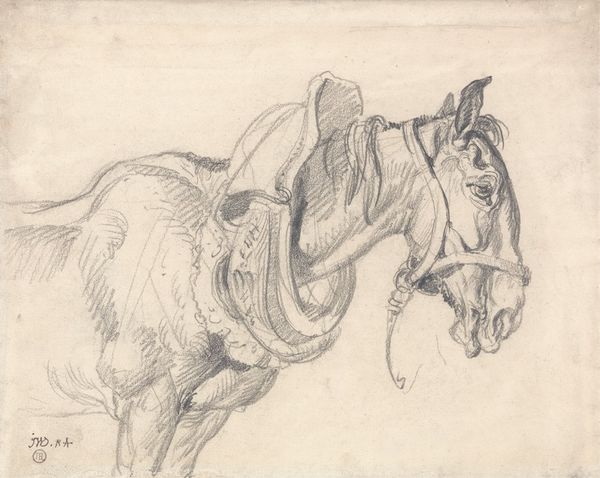
drawing, pencil
#
portrait
#
pencil drawn
#
drawing
#
amateur sketch
#
toned paper
#
light pencil work
#
pencil sketch
#
old engraving style
#
pencil drawing
#
pen-ink sketch
#
pencil
#
portrait drawing
#
pencil work
#
realism
Dimensions: height 73 mm, width 58 mm
Copyright: Rijks Museum: Open Domain
Pieter de Goeje made this small pencil drawing, "Head of a Cow," sometime in the first half of the 19th century. It was a period when the Netherlands, after French occupation, was redefining its national identity, and agricultural life held a certain symbolic value. The cow, often a symbol of pastoral life, here gets an individualized treatment through the close-up focus on its face. De Goeje captures a sense of the animal's sentience in the subtle shading around the eye. This was a time of changing relationships between humans and animals, influenced by scientific study and shifting agricultural practices. The drawing invites us to consider our relationship with the natural world. While seemingly simple, it underscores themes of labor, sustenance, and the complex bond between humans and animals, prompting us to think about our own place in the natural order.
Comments
No comments
Be the first to comment and join the conversation on the ultimate creative platform.
